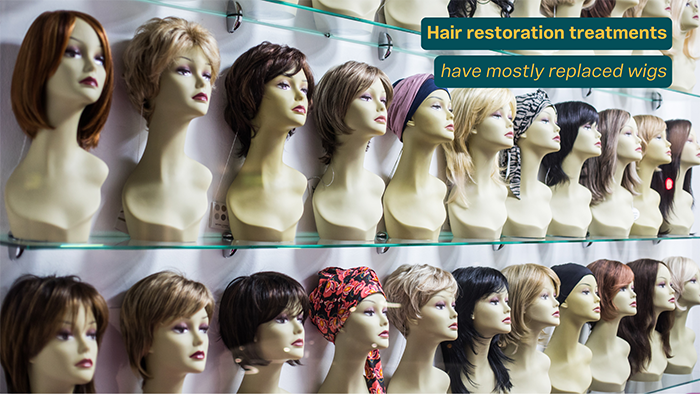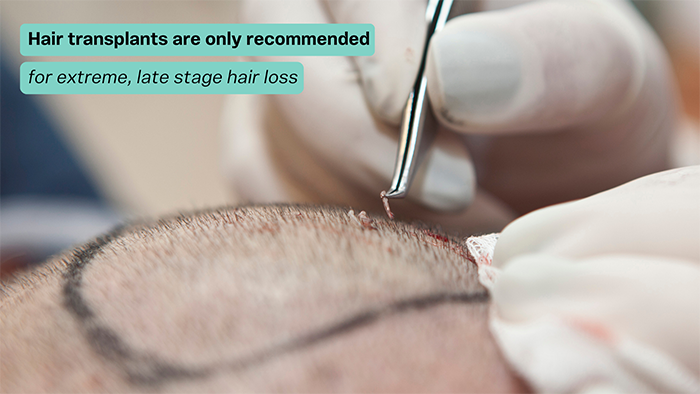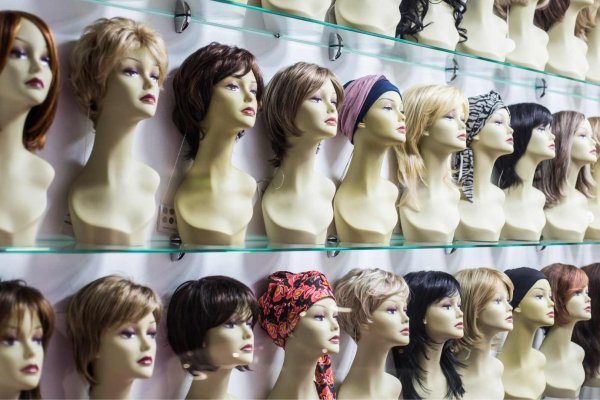From wigs to real hair regrowth.
Hair loss has always been a common concern. From ancient times to the modern day, men and women have looked for ways to restore their hair, and with it, their sense of self. Some of these treatments still exist today along with (mercifully) many more advanced solutions.
In this article we take a look at how hair loss treatments have evolved and why we’re now so confident we can get real results regrowing hair.

Hair Loss Systems: Wigging Out
Wigs have been around since ancient Egyptian times, but their popularity really exploded across Europe in the 17th century. This was led by French monarch, King Louis XVI, who introduced elaborate hair pieces as a fashion statement. While Louis himself suffered from balding since the age of 17, the trend became so popular that others with full heads of hair started wearing wigs too. This saw hair pieces became a symbol of power and wealth and led to the development of the phrase “Big Wigs”.
Over time these gaudy wigs fell out of fashion, leading to the gradual development of more realistic looking hair pieces. While it’s fair to say the quality of 20th century wigs varied greatly, today there are some ultra realistic options available.
This includes glue on hair systems that integrate small patches of artificial hair with your natural locks. In the early days of clinics like Ashley & Martin, when genuine hair regrowth was not possible, these “hair systems” were a popular option and were generally what was responsible for the sudden improvement to the hairlines of Hollywood actors and famous sports personalities.
Hair systems are still available in some places and can be a good option for those who are unable to regrow their hair, though it’s not something that is offered at Ashley & Martin clinics in Australia and New Zealand. This is as we’ve seen medical hair regrowth treatments advance to the point where they typically deliver better, natural results at a lower cost compared to hair systems.

Hair Transplants: From Shameless Plugs to FUE
The first medical hair loss treatment came in the late 19th century with hair transplants. The first documented hair transplant was performed in Japan by Dr. Shoji Okuda in 1939. However, it wasn’t until the 1950s that the technique gained popularity in the West. Popularly known as “the plug” procedure, this technique involved transplanting large hair grafts, often resulting in an unnatural appearance.
Thankfully, modern techniques have evolved significantly, with follicular unit transplantation (FUT) and follicular unit extraction (FUE) being the preferred methods today. These procedures offer more natural-looking results and minimal scarring, making them a far cry from the much maligned “hair plugs” of the past.
However, despite these advances, it is important to note that hair transplants are still only recommended for extreme, late-stage hair loss. This is as surgical procedures are highly invasive compared to other procedures and require an extended healing time. Hair transplants also require ongoing pharmaceutical treatment to maintain the health of the transplanted follicles.
If you’re considering a hair transplant, we recommend that you take advantage of Ashley & Martin’s free hair loss assessments. Here you can see if a hair transplant is right for you or if other, less expensive and less invasive treatments, can give you the results you are looking for.
Hair Loss Drugs: Dawn of a regrowth revolution
The 1980s marked a turning point in hair loss treatments. Topical treatments were the first pharmaceuticals introduced that proved to be effective in stimulating hair growth.
Ashley & Martin started providing medicated hair loss solutions as part of our treatments from 1994, but most of us were made aware of their existence via The Simpsons, with Homer using the fictional topical solution, Dimoxinil, to regrow his hair (with extremely exaggerated results).
Another significant hair loss breakthrough came a little later with the medical community’s increased understanding of the hormone known as Dihydrotestosterone (DHT). DHT is a male hormone that was identified as a leading cause of hair loss. It attacks hair-root cells and if left unchecked, leads to “male pattern baldness” and permanent hair loss.
DHT blockers and androgen blockers were introduced by Ashley & Martin in the late 90’s. Both treatments had some good success when used in isolation, but it was only later when they were applied as part of a multi-faceted treatment, that their true potential was unlocked.
Budget Drugs a Bad Deal for Hair Loss Sufferers
The good work being done by pharmaceutical treatments was undone to an extent by budget brands that promised miracles but delivered little.
These products supplied online and over the counter, claimed to include many of the same active ingredients as the hair loss treatments provided in clinics. While technically true, the dosages in the budget hair loss treatments were often much lower, which allowed them to be sold without a prescription. Consequently, these treatments were less effective in helping hair loss sufferers and contributed to the general scepticism surrounding hair loss treatments.
In some cases, these budget hair loss treatments can even be potentially dangerous. We’ve heard reports of some online providers supplying medicated treatments without any consideration of the individual’s hair loss condition or medical history. This has the potential to lead to extremely serious health complications if an underlying condition is aggravated.

Low-Level Laser Therapy (LLLT): Shining a Light on Hair Growth
The turn of the millennium brought forth another innovative treatment for hair loss: low-level laser therapy (LLLT). This non-invasive procedure involves the use of red light to stimulate hair follicles to promote hair growth.
As scientific studies accumulated, the effectiveness of LLLT in slowing down hair loss and stimulating regrowth became evident. At Ashley & Martin, LLLT devices are readily available, making them a viable option for those seeking hair restoration at any age. LLLT is an especially good option for women and others not suited to hormone blockers.
Multifaceted Approach: Combining treatments for exponential benefits
In 2017, the Journal of Drugs in Dermatology published the groundbreaking study, “New Insight into the Pathophysiology of Hair Loss Triggers a Paradigm Shift in the Treatment Approach”. This paper detailed how combining different hair loss treatments delivered better results than relying on any single treatment.
In many respects, this makes a lot of sense. We know there are many factors that contribute to hair loss, so by combining treatments that address all the root causes, we can have greater success restoring and regrowing hair.
This marked a significant departure from the one-size-fits-all approach and showcased how comprehensive treatments, tailored to the individual’s condition, can lead to more satisfying outcomes.
At this time, Ashley & Martin was already known for its success providing multi-faceted treatments, but the new study confirmed how “complete care” programs were the gold standard in hair loss treatments.
Future Solutions:
Hair loss treatments are always evolving. Right now, researchers are exploring gene therapy, stem cell therapies, and tissue engineering to unlock even more effective and tailored solutions. The possibilities are endless, and these ongoing advancements hold the potential to revolutionise hair loss treatments further.
But whatever the future brings, you can be sure Ashley & Martin will be helping those in Australia, New Zealand and Singapore find the right treatment for them.
